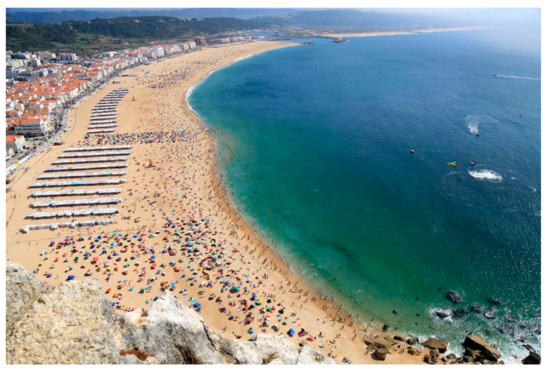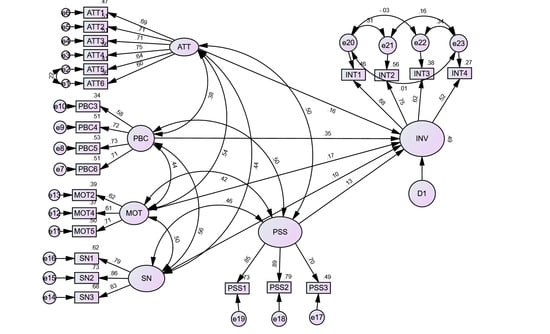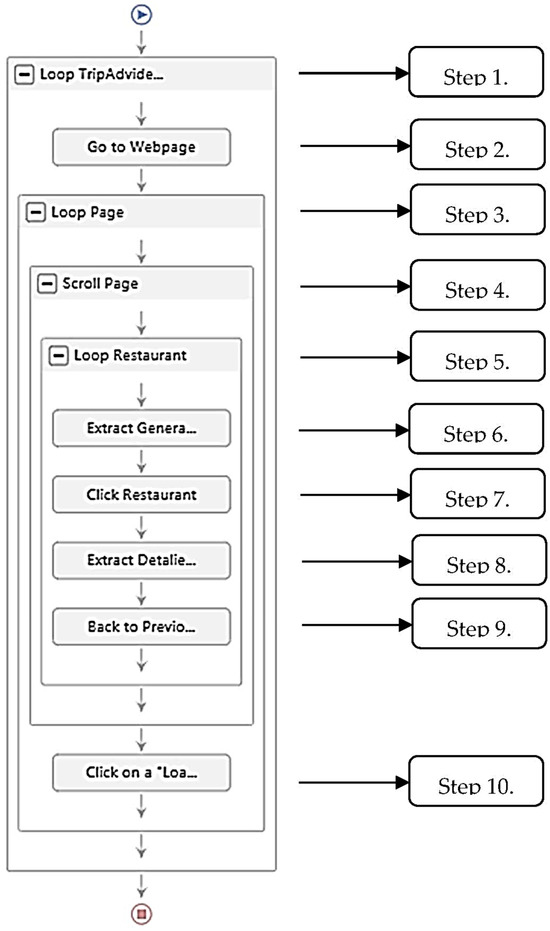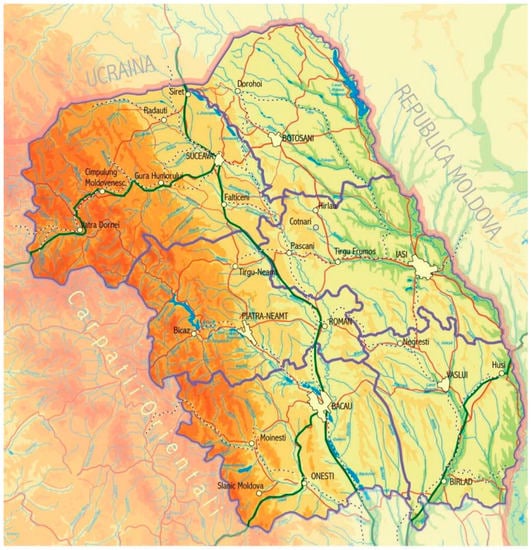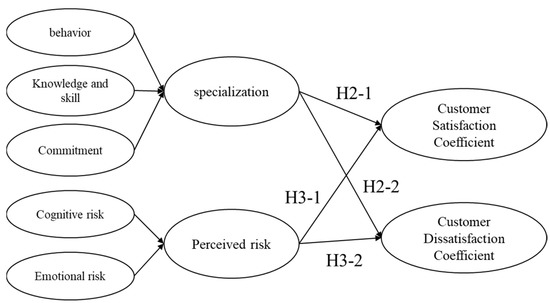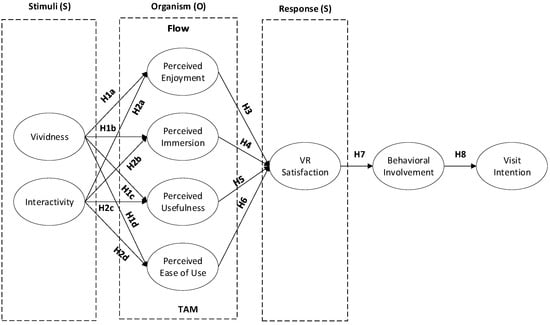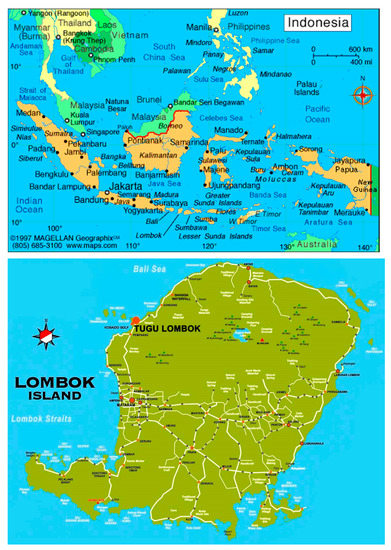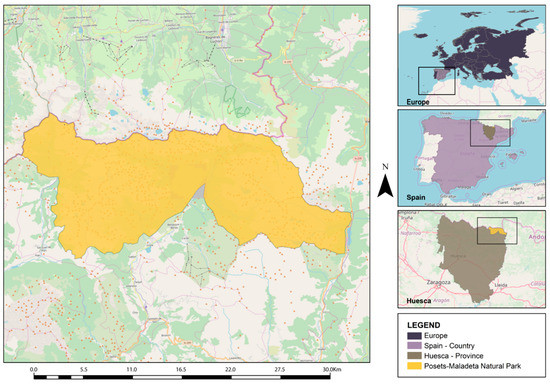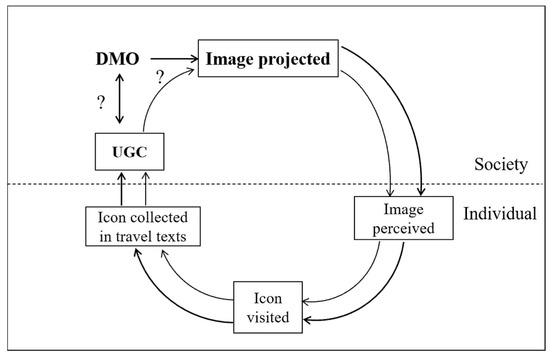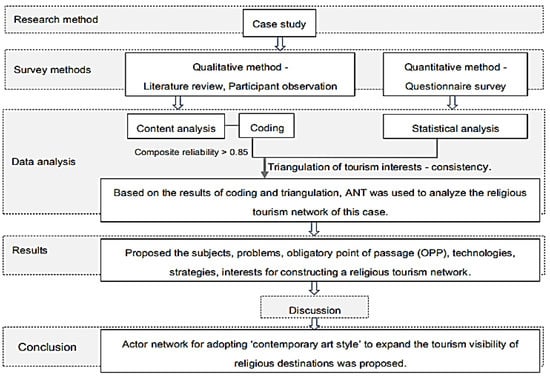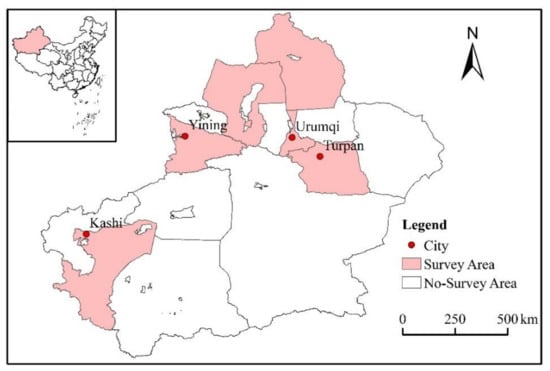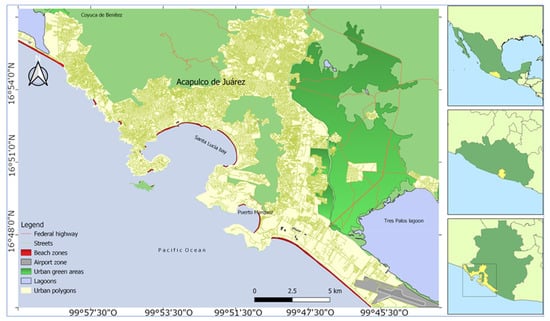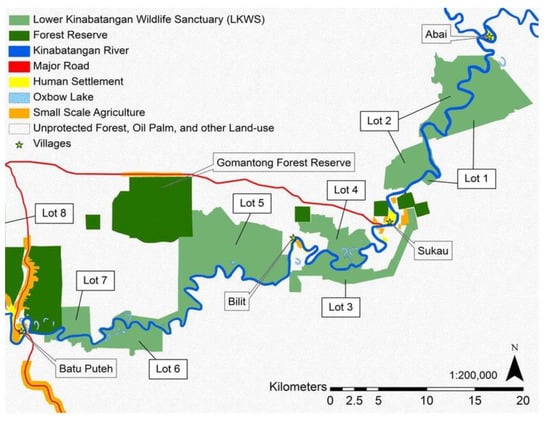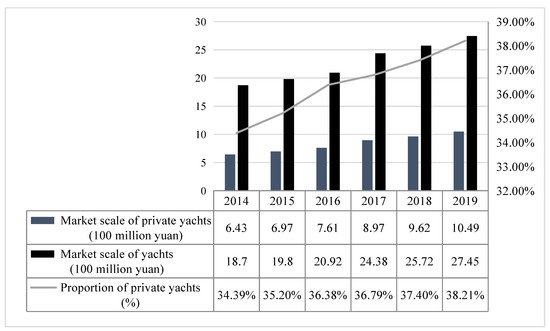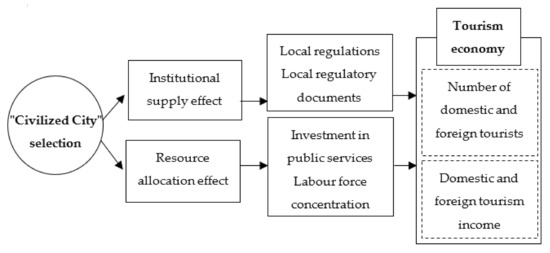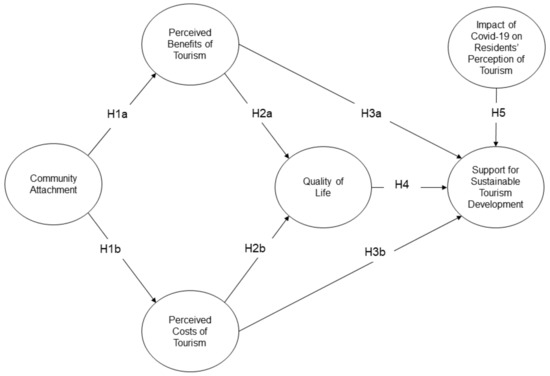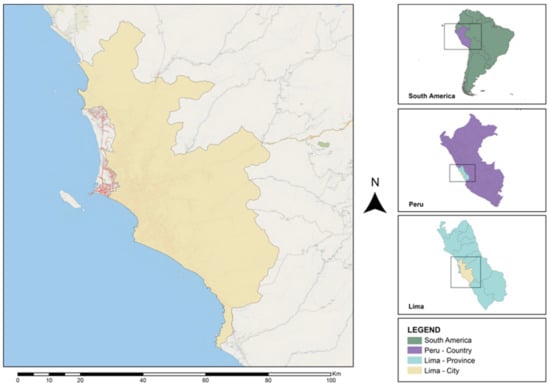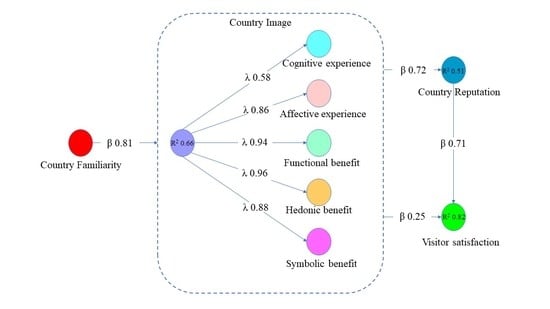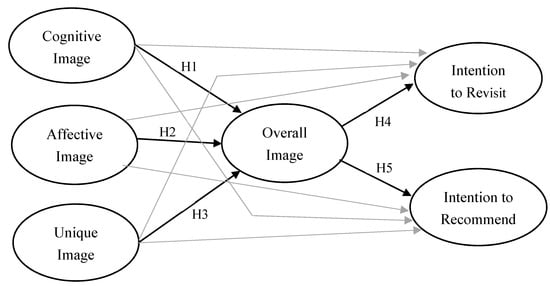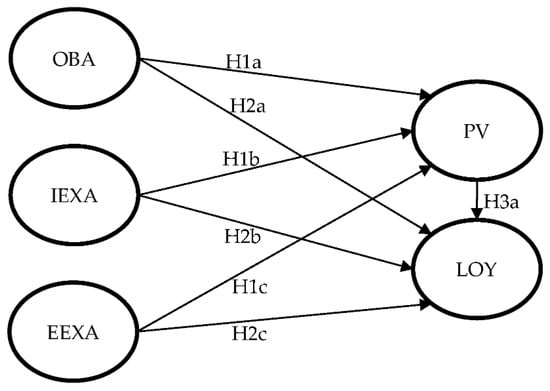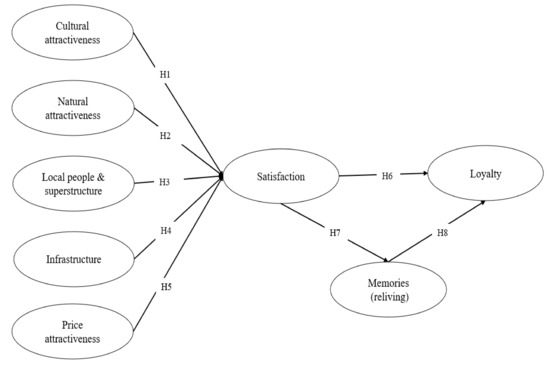Advances in Marketing and Managing Tourism Destinations
Share This Topical Collection
Editor
 Prof. Dr. Alastair M. Morrison
Prof. Dr. Alastair M. Morrison
 Prof. Dr. Alastair M. Morrison
Prof. Dr. Alastair M. Morrison
E-Mail
Website
Guest Editor
Greenwich Business School, University of Greenwich, Park Row, London SE10 9SL, UK
Interests: destination management; tourism consumer behaviour; tourism and hospitality marketing; sustainable tourism and responsible travel; digital marketing; tourism education
Special Issues, Collections and Topics in MDPI journals
Topical Collection Information
Dear Colleagues,
Destination management and marketing have been evolving and professionalizing steadily over the past 25-plus years. This Special Issue of Sustainability aims to publish high quality research on recent and expected advances in destination management and marketing within the context of sustainable development. Works that reflect the situation during and after the COVID-19 pandemic will be given a priority.
Manuscripts addressing the following and related topics and themes are invited:
- Recent evolution of destination management and marketing
- The impacts of COVID-19 on destination management and marketing
- Crisis management within destination management
- Leadership and destination management and marketing
- The intersections of destination management and sustainable tourism
- Responsible tourism/travel and destination management
- Destination management planning and strategy
- Visitor management by destinations
- Resident quality of life and destination management
- The role of destination marketing within destination management
- Recent advances in destination management and marketing
- Social media and destination management and marketing
- Influences of smart tourism on destination management and marketing
- Artificial intelligence applications in destination management and marketing
- Traditional vs. new media in destination marketing
- Community resident involvement in destination management and marketing
- Tourism product development and destination management
- Community based tourism (CBT) and destination management
- Festivals and events in destination management and marketing
- Partnership, cooperation, and collaboration in destination management and marketing
- Research for destination management and marketing
- Consumer behavior and destination marketing
- Creativity and innovation in destination management and marketing
- Domestic vs. international tourism marketing
- City destination management
- Business tourism advances
- Accessible tourism and destination management
- Destination management organizations and their roles
- Funding for destination management and marketing
- The governance of destination management and marketing
- Destination management and performance measurement
- The future for destination management and marketing
Please contact Guest Editor directly with questions about potential topics and themes.
Prof. Dr. Alastair M. Morrison
Guest Editor
Manuscript Submission Information
Manuscripts should be submitted online at www.mdpi.com by registering and logging in to this website. Once you are registered, click here to go to the submission form. Manuscripts can be submitted until the deadline. All submissions that pass pre-check are peer-reviewed. Accepted papers will be published continuously in the journal (as soon as accepted) and will be listed together on the collection website. Research articles, review articles as well as short communications are invited. For planned papers, a title and short abstract (about 100 words) can be sent to the Editorial Office for announcement on this website.
Submitted manuscripts should not have been published previously, nor be under consideration for publication elsewhere (except conference proceedings papers). All manuscripts are thoroughly refereed through a single-blind peer-review process. A guide for authors and other relevant information for submission of manuscripts is available on the Instructions for Authors page. Sustainability is an international peer-reviewed open access semimonthly journal published by MDPI.
Please visit the Instructions for Authors page before submitting a manuscript.
The Article Processing Charge (APC) for publication in this open access journal is 2400 CHF (Swiss Francs).
Submitted papers should be well formatted and use good English. Authors may use MDPI's
English editing service prior to publication or during author revisions.
Keywords
- destination management
- destination marketing
- destination branding
- Sustainable Development Goals (SDGs)
- sustainable tourism
- responsible tourism
- digital marketing and ICTs
- social media
- new normal
- virtual reality
- artificial intelligence (AI)
Published Papers (32 papers)
Open AccessArticle
Tourists’ Perception of Tourist Destinations: The Case Study of Nazaré (Portugal)
by
Rita Teles, Hugo Martins, António Pinheiro and Eduardo Gonçalves
Viewed by 957
Abstract
Although Destination Image is a relevant investigation topic in the literature, few studies pay attention to Destination Image as reflected in tourists’ evaluations and reviews on social networks. Given the importance of social media and the relationship between places and the image of
[...] Read more.
Although Destination Image is a relevant investigation topic in the literature, few studies pay attention to Destination Image as reflected in tourists’ evaluations and reviews on social networks. Given the importance of social media and the relationship between places and the image of those places, this investigation seeks to analyse visitors’ perceptions of a tourist destination. The village of Nazaré (Portugal) was chosen for the analysis. The purpose was to analyse the perceptions of tourists to this village. Methodologically, a netnographic analysis was carried out considering the comments and evaluations made on the TripAdvisor platform, renowned among tourists. The three main attractions were found, and all the comments were counted (
n = 565) over the 6-year period, from January 2018 to March 2023. It was possible to define the visitor profile. A content analysis was carried out that sought to categorise visitors’ perceptions into fourteen categories, namely beach, landscapes, accessibility, recommendations, location, appreciation of the intangible, enjoyment of the experience, emotions, prices, climate, good for a walk, good gastronomy, tourist activity and senses. The contribution of this investigation is to recognise the importance of the village of Nazaré as a tourist destination, centred on the perception of its visitors. Although limited in its scope, this study emphasises the need for tourism promotion agents to focus their initiatives on the creation of immersive experiences and their emotions, as these were two of the categories little mentioned in this study.
Full article
►▼
Show Figures
Open AccessArticle
Behavioral Intention in Domestic Heritage Tourism—An Extension of the Theory of Planned Behavior
by
Peter Onyonje Osiako and Viktória Szente
Viewed by 947
Abstract
Heritage tourist attractions are important in the diversification of tourism product offers for any competitive tourist destination. The current status of domestic heritage tourism in Kenya remains under-researched leaving many critical areas of interest requiring more research attention and redress. These needs also
[...] Read more.
Heritage tourist attractions are important in the diversification of tourism product offers for any competitive tourist destination. The current status of domestic heritage tourism in Kenya remains under-researched leaving many critical areas of interest requiring more research attention and redress. These needs also have to be examined in the Kenyan domestic heritage tourism context with a view to creating and satisfying higher demand for tourists. This research expands the widespread theory of planned behavior (TPB) by adding motivation and perceived safety and security as predictors of visit intention. In total, 802 respondents filled out the structured questionnaire, of which 693 questionnaires (86%) were found to be valid. The findings of this study validated the TPB with respect to heritage visitation in a domestic tourism context. It was further established that the expanded TPB model and its variables were applicable and more efficacious in directly predicting visit intention to historical heritage attractions. These results reveal the key determinants of the willingness of domestic tourists to visit historical heritage sites. Destination marketers and managers should endeavor to enhance the five psychographic aspects considered in the current study, in order to cultivate higher intentions towards visiting historical heritage sites among domestic tourists.
Full article
►▼
Show Figures
Open AccessArticle
A Sustainable Analysis Regarding the Impact of Tourism on Food Preferences in European Capitals
by
Florin Răzvan Lupșa-Tătaru, Radu Constantin Lixăndroiu and Dana Adriana Lupșa-Tătaru
Viewed by 1114
Abstract
This research examines the interrelationships among the scope of tourism, travellers’ food choices, and the restaurant business in European capitals. It employs a sustainable and electronic tool, Octoparse 8, to gather and analyse a substantial volume of data. The study utilises computerised data
[...] Read more.
This research examines the interrelationships among the scope of tourism, travellers’ food choices, and the restaurant business in European capitals. It employs a sustainable and electronic tool, Octoparse 8, to gather and analyse a substantial volume of data. The study utilises computerised data including a total of 10 million reviews pertaining to 21,885 eateries located in 27 European cities. The findings of the research indicate that a significant majority of travellers exhibit a preference for dining establishments that provide vegetarian-friendly and vegan alternatives, as well as gluten-free choices. Furthermore, these individuals tend to gravitate towards European and Mediterranean cuisine when selecting restaurants. There are a limited number of capital cities, like Madrid, Paris, and Rome, where visitors tend to choose local cuisine due to the renowned reputation and longstanding culinary traditions associated with these respective nations. When evaluating a restaurant, visitors do not rely on pricing as a determining factor. Additionally, when discussing captivating scenarios, it is important to examine the cities of Roma and Valetta.
Full article
►▼
Show Figures
Open AccessArticle
How Does Destination Experience Value Affect Brand Value and Behavioral Intention? The Moderator Role of Self Congruity
by
Ebru Gozen, Aylin Aktas Alan, Emel Celep, Gozde Seval Ergun, Ozgur Yayla, Huseyin Keles and Arif Aytekin
Viewed by 908
Abstract
The primary purpose of this research is to reveal the moderator role of self-congruity in the effect of consumer return on investment, aesthetics, service excellence, and playfulness as the sub-dimensions of destination experience value on destination brand equity and in the effect of
[...] Read more.
The primary purpose of this research is to reveal the moderator role of self-congruity in the effect of consumer return on investment, aesthetics, service excellence, and playfulness as the sub-dimensions of destination experience value on destination brand equity and in the effect of destination brand value on behavioral intention. The research data were obtained utilizing the survey method. The findings of the study revealed that all dimensions under the destination experience value significantly and positively affect the destination brand value. When the effect of the overall brand value of the destination on the behavioral intention is evaluated, the brand value affects the behavioral intention positively and strongly. It was concluded in the study that self-congruity has a moderator effect on customer return on investment and playfulness dimensions on destination brand value, whereas the construct of self-congruity does not have a moderator effect on service excellence and aesthetic dimensions on destination brand value and that self-congruity has a moderator effect on destination brand value perception on behavioral intention. The study provides important practical contributions to both destination marketing managers and national and local authorities.
Full article
Open AccessArticle
The Impact of Consumer’s Adaptation to the Creative Culture of Theme Parks on Review Usefulness
by
Shugang Li, Qian Dou, Hui Chen and Zhaoxu Yu
Viewed by 1130
Abstract
In the era of information overload and repetitive reviews, there has been limited exploration into the influence of consumers’ cultural adaptation to creative symbols in theme parks on the usefulness of online reviews, which is significant for enhancing tourism experiences, targeted marketing, personalized
[...] Read more.
In the era of information overload and repetitive reviews, there has been limited exploration into the influence of consumers’ cultural adaptation to creative symbols in theme parks on the usefulness of online reviews, which is significant for enhancing tourism experiences, targeted marketing, personalized services, and informed tourism choices. This study aims to bridge this gap by examining how cultural adaptation factors interact and impact the review usefulness, and by considering the role of cultural adaptation in simplifying information during consumer decision-making processes. Additionally, the study investigates how consumers’ decision reference points, represented by advanced ticket levels, moderate their attention to attribute consistency when evaluating the review usefulness. A sample of 5929 valid consumer reviews of Disney theme parks from 2019 to 2022 on Meituan.com is analyzed using latent semantic analysis and Tobit regression to test the proposed hypotheses. We find that high symbolic creativity reviews stimulate cultural adaptation and increase attention to service attributes when evaluating review usefulness. Moreover, advanced ticket levels do not moderate the usefulness of extremely negative reviews. However, they do have a moderating effect on the usefulness of extremely positive reviews, with the direction of moderation differing based on the levels of symbolic creativity.
Full article
►▼
Show Figures
Open AccessArticle
Religious Tourism and Sustainable Development of the Economy in the Context of Globalization in the Northeast Area of Romania
by
Doina Guriţă and Florin Ioan Scortescu
Cited by 2 | Viewed by 2432
Abstract
The present study aims to demonstrate the significance of religious tourism and its impact on both the economy and socio-culture. Religious tourism provides a sacred and spiritual environment that has the potential to shape the motivational state of individuals searching for cultural and
[...] Read more.
The present study aims to demonstrate the significance of religious tourism and its impact on both the economy and socio-culture. Religious tourism provides a sacred and spiritual environment that has the potential to shape the motivational state of individuals searching for cultural and religious landmarks and destinations to support their spiritual well-being. Hence, it is imperative to maintain close relationships between religion, culture, and tourism as they play a crucial role in promoting spirituality and human development, particularly in the context of globalization and sustainable economic development. In the latter part of the paper, research was conducted to formulate strategies aimed at the development of religious tourism in the northeast region of Romania, which is an economically underprivileged area with significant untapped tourist potential. The findings suggest that via improvements in infrastructure, the creation of a favorable business environment, enhanced promotion, development of accommodation facilities, and improvement in services, the area can achieve a higher quality of life and sustainable development.
Full article
►▼
Show Figures
Open AccessArticle
Using Kano Model to Understand an Effect of Specialization and Perceived Risk on Demand for Services in Marine Tourism
by
Jangwook Kwon and Kyunghwan Lim
Cited by 2 | Viewed by 1175
Abstract
This paper attempted to combine the Kano model and the service blueprint for quality management in marine tourism services. It also investigated the influence of customer characteristics, focusing on services that customers directly experience. Data were collected from those who experienced marine leisure
[...] Read more.
This paper attempted to combine the Kano model and the service blueprint for quality management in marine tourism services. It also investigated the influence of customer characteristics, focusing on services that customers directly experience. Data were collected from those who experienced marine leisure in Korea in the past three years, and an analysis of differences between groups was conducted. The difference analysis showed significant differences in the frequency of service quality factors for men and women in six service items, and beginners showed significant differences in four items in the career comparison. Specialization and perceived risk were set as independent variables, and regression analysis was performed by setting the Timko coefficient as a dependent variable. The results showed that specialization did not significantly affect the customer satisfaction coefficient or the customer dissatisfaction coefficient. However, perceived risk had a significant negative effect on the customer satisfaction coefficient and a significant positive effect on the customer dissatisfaction coefficient. To attract those who strongly perceive risks as customers, a service strategy focusing on service elements that minimize complaints is more effective. In addition, it was found that women have a strong demand for both service elements that increase satisfaction and service elements that reduce dissatisfaction.
Full article
►▼
Show Figures
Open AccessArticle
Developing a Wine Tourism Destination Image Measurement Scale
by
Gvantsa Sekhniashvili and Zoltán Bujdosó
Cited by 2 | Viewed by 1234
Abstract
Wine tourism plays an important role in the positioning strategies of wine destinations. As the competitiveness is high among wine destinations, it is important to identify the main factors that affect wine tourists’ decision making. One of the most important factors is the
[...] Read more.
Wine tourism plays an important role in the positioning strategies of wine destinations. As the competitiveness is high among wine destinations, it is important to identify the main factors that affect wine tourists’ decision making. One of the most important factors is the wine tourism destination’s image. To measure the image of a wine region, there is a need for a scale that is adapted to the characteristics of wine tourism destinations. Our purpose is to develop a scale that can measure any wine region’s image. We used a literature review and focus group interviews to collect scale attributes. We gathered responses using an online survey. Our respondents were mostly non-visitors. We used FA to analyze the data. We also tested the reliability of this scale using Cronbach’s Alpha. As a result, we developed a reliable scale with six factors. This can be further tested and used by any wine tourism destination to measure the people’s perceptions about them. The developed scale can have various purposes. It can be used by destination management organizations or marketing agencies. Measured images of wine region can be used in the planning of future positioning strategies and promotions. The scale can be used to compare the images of competitor wine regions. Images can also be studied during a period and any changes can be observed.
Full article
Open AccessArticle
Clustering Travelers’ Lifestyle Destination Image from Five Asian Traveler-Generated Content
by
Ping-Heng Tsai, Chia-Chi Hsaio, Yan-Ru Li and Chun-Chieh Lin
Cited by 1 | Viewed by 1227
Abstract
This study examines the destination image and lifestyle experience via traveler-generated comments. To understand the travelers’ behavior, we first established a crawler, which helps us to gather the travelers’ comments from tourism social media. After conducting a content analysis, text mining, and factor
[...] Read more.
This study examines the destination image and lifestyle experience via traveler-generated comments. To understand the travelers’ behavior, we first established a crawler, which helps us to gather the travelers’ comments from tourism social media. After conducting a content analysis, text mining, and factor analysis of a sampling of 23,019 travelers’ comments, this study found that travelers based on their activities and experiences constructed their image. Additionally, we also found that the travelers’ emotions and impressions showed up with their images. From the result of factor analysis, we extract the 13 clustering results and perform the one-way ANOVA with Scheffe’s method to compare the difference among each group. Finally, we used the related sentences to draw a relation map to explain the inner difference between travelers. This study’s results suggest that traveler-generated comments can be especially useful for destination image analysis and market segments in tourism marketing and management. This study also highlights the importance of understanding destination image and marketing segment from the travelers’ comments and challenges for those in tourism marketing to narrow the gap.
Full article
►▼
Show Figures
Open AccessArticle
How VR Technological Features Prompt Tourists’ Visiting Intention: An Integrated Approach
by
Thi Bich Thuy Nguyen, Thi Bich Ngoc Le and Ngoc Tuan Chau
Cited by 3 | Viewed by 3361
Abstract
To achieve sustainable tourism, the tourism development authorities have used advanced technologies to promote destinations, attract visitors, and protect the environment. Accordingly, while the available research on tourism technologies indicates that virtual reality (VR) matters in the visit intention of potential tourists, the
[...] Read more.
To achieve sustainable tourism, the tourism development authorities have used advanced technologies to promote destinations, attract visitors, and protect the environment. Accordingly, while the available research on tourism technologies indicates that virtual reality (VR) matters in the visit intention of potential tourists, the mechanism of their inner senses when experiencing VR technologies is overlooked. To fill in this void, this study develops a comprehensive conceptual model for investigating the influence of VR technological features on tourists’ minds, and consequently, their destination visit intention. This study integrates the technology acceptance model, stimuli-organism-response model, and flow theory into a unified conceptual model for a comprehensive understanding of tourists’ behavior. By focusing on tourists’ decision-making and behavior processes, this study sheds new light on how VR stimuli (i.e., vividness and interactivity) could translate into tourists’ attitudes and visiting intentions. This conceptual model is then tested and validated using structural equation modeling on survey data collected from 311 VR users after experiencing virtual tours designed for destinations in Vietnam. The findings indicate that virtual tours affect tourists’ psychological well-being, which translates into visiting intention. Based on the results, this study emphasizes the role of VR as a powerful marketing tool to promote a destination. Furthermore, approaches to enhance the effectiveness of VR tours, particularly, for tourism developers, are proposed. This study thus contributes to the literature in the area of VR tourism, contributing both theoretical and practical knowledge.
Full article
►▼
Show Figures
Open AccessArticle
Identifying Tourism Potentials of Ethno-Cultural Attractions in Lombok
by
Yuni Budi Lestari and Kamaludin Yusra
Cited by 2 | Viewed by 2488
Abstract
This article is aimed at identifying the potential of various ethno-cultural practices in the Sasak community with a view of developing them as ethno-cultural attractions to sustain tourists to stay longer in Lombok. Various ethno-cultural practices in relation to folklore, festivals, sports, music,
[...] Read more.
This article is aimed at identifying the potential of various ethno-cultural practices in the Sasak community with a view of developing them as ethno-cultural attractions to sustain tourists to stay longer in Lombok. Various ethno-cultural practices in relation to folklore, festivals, sports, music, food, beverage, and cultural events were identified, and the tourism potentials were also measured. Data were collected by directly observing and video-recoding the ethno-cultural events, interviewing cultural leaders, religious clerics, community leaders, tourism practitioners, tourism experts, tourism workers’ organizations, entrepreneurs, and governments. With content analysis, the study has identified ethno-cultural practices with the potential to be an alternative to Lombok’s tourist attractions. These practices are not only essential for Indonesian multiculturalism but are also a resource for improving the economic quality of Sasak families and communities. The article also recommends strategies for this development.
Full article
►▼
Show Figures
Open AccessArticle
Market Segmentation by Motivations in Ecotourism: Application in the Posets-Maladeta Natural Park, Spain
by
Mauricio Carvache-Franco, Conrado Carrascosa-López and Wilmer Carvache-Franco
Cited by 5 | Viewed by 2032
Abstract
Environmental awareness and carrying out tourism activities in nature are increasing today. Therefore, the present study has been conducted in a natural park, and its objectives are the following: (a) identify the motivation of ecotourism; (b) determine the segmentation by motivations of ecotourism;
[...] Read more.
Environmental awareness and carrying out tourism activities in nature are increasing today. Therefore, the present study has been conducted in a natural park, and its objectives are the following: (a) identify the motivation of ecotourism; (b) determine the segmentation by motivations of ecotourism; and (c) establish the relationship between the segments and variables of satisfaction and loyalty such as return, recommendation and saying positive things about the destination. The study was carried out in the Posets-Maladeta Natural Park located in Spain, in the center of the Pyrenees mountain range. The sample consisted of 341 surveys obtained in situ. To analyze the data, exploratory factor analysis, confirmatory factor analysis and nonhierarchical segmentation of K-means were used. The results in ecotourism applied to a natural park show seven motivational dimensions: self-development, interpersonal relations, construction of personal relations, escape, reward, appreciation of nature and ego defense function. The results also reveal the existence of three segments of ecotourists: “reward and escape”, “nature” and “multiple motives”. The “reward and escape” segment shows the highest score in satisfaction and loyalty variables. The results will serve as development guides for the administrators of the natural parks and in the elaboration of ecotourism products according to the demand found.
Full article
►▼
Show Figures
Open AccessArticle
Adaptive Reuse of Heritage Houses and Hotel Conative Loyalty: Digital Technology as a Moderator and Memorable Tourism and Hospitality Experience as a Mediator
by
Ibrahim A. Elshaer, Sameh Fayyad, Salama Ammar, Tamer Ahmed Abdulaziz and Samy Wageh Mahmoud
Cited by 8 | Viewed by 4254
Abstract
Several studies have shown that the adaptive reuse of heritage houses as accommodation hotels could preserve their value and attain many financial, social, environmental, and cultural benefits for both tourist destinations and hotel firms. The current study examines to what extent the adaptive
[...] Read more.
Several studies have shown that the adaptive reuse of heritage houses as accommodation hotels could preserve their value and attain many financial, social, environmental, and cultural benefits for both tourist destinations and hotel firms. The current study examines to what extent the adaptive reuse of heritage houses can improve conative loyalty to hotels through the mediating roles of memorable tourism and hospitality experiences. Perceptions of 308 customers who frequently occupy heritage hotels were explored and examined with structural equation modelling. The empirical results show that the adaptive reuse of heritage houses has a positive influence on memorable tourism and hospitality experiences. The memorable tourism and hospitality experience has significantly mediated the relationship between the adaptive reuse of heritage houses and hotel conative loyalty. Lastly, theoretical and practical implications are included concerning how to apply these findings to the tourism and hospitality industry.
Full article
►▼
Show Figures
Open AccessArticle
Sustainable Tourism Destination Image Projection: The Inter-Influences between DMOs and Tourists
by
Dan Zhu, Jiayi Wang and Meifang Wang
Cited by 5 | Viewed by 2861
Abstract
With the development of the Web 2.0 era, tourists can freely publish their destination experiences through online travel notes. This enables tourists to become important agents to project tourism destination image (TDI), impacting destination-sustainable development. Previous studies have compared the difference in the
[...] Read more.
With the development of the Web 2.0 era, tourists can freely publish their destination experiences through online travel notes. This enables tourists to become important agents to project tourism destination image (TDI), impacting destination-sustainable development. Previous studies have compared the difference in the images projected by destination management organizations (DMO) and tourists through their published content. However, fewer studies have been done to explore the inter-influences between them on the diachronic process of TDI construction. From the perspective of “circle of representation” this question is researched through a case study of Chiang Mai, Thailand, regarding the market of mainland Chinese tourists. Through interviews and the collection of microblogs from the Thailand National Tourism Bureau and tourists’ travel notes from 2009 to 2021, we found that Chiang Mai has experienced four stages of TDI construction, during which the “Xiao Qingxin” image is evolutionally constructed and formed into the representation circle. The inter-influences between DMO and tourists, as well as the influencing factors in this process, are summarized. Our study supplements a dynamic diachronic analysis of TDI from the constructivism perspective. Relevant management and marketing applications for TDI and destination sustainability in the post-pandemic and Web 2.0 era are also provided.
Full article
►▼
Show Figures
Open AccessArticle
How Religious Destinations Innovate Tourism Models in Religious Personalization: An Evidence from Contemporary Art-Temple Collaboration
by
Hui-Li Lin, Fang-Suey Lin, Shih-Wei Liu and Yen-Cheng Liu
Viewed by 2477
Abstract
In response to the development of religious personalization, the old marketing strategies of most religious destinations have been unable to effectively promote their popularity in modern times. This article deeply explored how to use contemporary art to design religious destinations comprehensively and proposed
[...] Read more.
In response to the development of religious personalization, the old marketing strategies of most religious destinations have been unable to effectively promote their popularity in modern times. This article deeply explored how to use contemporary art to design religious destinations comprehensively and proposed an effective solution to enhance the popularity of religious destinations in religious tourism. We established an actor network in religious tourism with qualitative and quantitative analyses and took the Buddhism Yuan-Dao Guanyin Temple in Taiwan as a case analysis. We found temples to be the main actors in religious tourism networks and temple organizations to serve as their spokespersons. The successful obligatory point of passage (OPP) in the network was that “the religious performance of Yuan-Dao Guanyin Temple is a contemporary art style, and every subject who enters the temple field can obtain interests”. This is primarily formulated by the interaction between religion and contemporary art. The results show that adopting a contemporary art style in this case can successfully expand the popularity of the religious destination. Through the actor network model proposed in this paper, it can be used as a strategy for other religious destinations to improve religious tourism.
Full article
►▼
Show Figures
Open AccessArticle
Influence of Tourism Safety Perception on Destination Image: A Case Study of Xinjiang, China
by
Guijin Ding and Jinfeng Wu
Cited by 9 | Viewed by 5417
Abstract
Tourism safety perception is one of the factors influencing destination image, but there is a lack of systematic research on the multidimensional influence of tourism safety perception on destination image. In this paper, based on the survey data collected from 623 tourists traveling
[...] Read more.
Tourism safety perception is one of the factors influencing destination image, but there is a lack of systematic research on the multidimensional influence of tourism safety perception on destination image. In this paper, based on the survey data collected from 623 tourists traveling in Xinjiang, China, we classified the respondents into three types of high, medium, and low levels of tourism safety perception by cluster analysis, and studied the influence of tourism safety perception on destination image in multiple dimensions by means of content analysis, diversity index, one-way ANOVA, and factor analysis. We found that tourism safety perception significantly affects the cognitive image, affective image, and conative image of the destination. Tourists with a high safety perception evaluate and affectively experience destination attributes more positively with higher satisfaction and stronger willingness to revisit and recommend. Tourism safety perception affects the stereotype image of the destination to a certain extent. Tourists in general produce a broadly homogeneous stereotype image, but there are differences in diversity and emotions. Tourists with a high safety perception have a richer and more positive stereotype image. This study enriches and deepens the theory regarding the influence of tourism safety perception on destination image, and also provides a richer theoretical basis for destination image construction and precision marketing.
Full article
►▼
Show Figures
Open AccessArticle
Tourism Market Segmentation Applied to Coastal and Marine Destinations: A Study from Acapulco, Mexico
by
Mauricio Carvache-Franco, Wilmer Carvache-Franco, Orly Carvache-Franco and María Magdalena Solis-Radilla
Cited by 1 | Viewed by 2885
Abstract
Coastal and marine destinations offer alternate options for the sun and the beach, options that are related to nature and culture. This empirical study aims to segment the demand of domestic tourism in coastal and marine destinations and its relationship with satisfaction and
[...] Read more.
Coastal and marine destinations offer alternate options for the sun and the beach, options that are related to nature and culture. This empirical study aims to segment the demand of domestic tourism in coastal and marine destinations and its relationship with satisfaction and loyalty. A factorial analysis and an analysis of K-means clusters were used to reduce and group data. Six motivational dimensions are evident heritage and nature, learning, and sun and beach; and physical, authentic coastal experience, novelty, and social interaction. Two segments were found: the “multiple coastal motives,” which returned a high motivation among the motivational variables proposed and are related to all the factors found, and the “beach lovers”, with high motivation in the aspects of sun and beach, resting, and wanting to see things they do not usually see. These two segments are related to the dimensions of sun and beach and novelty. The multiple coastal motives rendered higher levels of satisfaction and in some variables of future behavior, which shows the relationship of the motivation with the visit. The findings are used to develop marketing plans appropriate to the characteristics of the demand found in each group.
Full article
►▼
Show Figures
Open AccessArticle
Local Community Participation and Responsible Tourism Practices in Ecotourism Destination: A Case of Lower Kinabatangan, Sabah
by
Jennifer Kim Lian Chan, Kamarul Mizal Marzuki and Tini Maizura Mohtar
Cited by 17 | Viewed by 9105
Abstract
Recognizing the importance of local community participation in responsible tourism and its benefits, this case study explores and analyses the local community participation and responsible tourism practices at Lower Kinabatangan, Sabah, a premier ecotourism destination from the stakeholders’ perspectives. It also describes the
[...] Read more.
Recognizing the importance of local community participation in responsible tourism and its benefits, this case study explores and analyses the local community participation and responsible tourism practices at Lower Kinabatangan, Sabah, a premier ecotourism destination from the stakeholders’ perspectives. It also describes the perception and attitudes towards tourism development including the key issues and challenges faced by the local communities. The case study adopted multiple methods involving focus-group interviews and survey questionnaires with the respective local communities residing in Lower Kinabatangan. Findings reveal that local communities recognized that Lower Kinabatangan has great potential to be developed as a sustainable ecotourism destination and to generate economic benefit. Despite this, there is limited participation of local communities in ecotourism development and responsible tourism practices among the local communities. The socio-economic demographic of the local community shows that only 42.4% of respondents have work related to tourism activities. Lack of capital and knowledge in tourism activities are the key barriers for local participation in ecotourism development. For Lower Kinabatangan to be a sustainable ecotourism destination, the participation and engagement of the local community and the practices of responsible tourism can no longer be ignored.
Full article
►▼
Show Figures
Open AccessArticle
Examining the Constraints on Yachting Tourism Development in China: A Qualitative Study of Stakeholder Perceptions
by
Yunhao Yao, Ruoquan Zheng and Merle Parmak
Cited by 3 | Viewed by 2202
Abstract
Clarifying the current constraints facing the development of yachting tourism in China is key to ensuring the healthy development of this niche industry. This study uses grounded theory as a theoretical basis to conduct qualitative research and applies semi-structured interview techniques to examine
[...] Read more.
Clarifying the current constraints facing the development of yachting tourism in China is key to ensuring the healthy development of this niche industry. This study uses grounded theory as a theoretical basis to conduct qualitative research and applies semi-structured interview techniques to examine stakeholders’ views on the constraints on the development of yachting tourism in China, from the perspectives of both yachting supply and demand. MAXQDA2020 qualitative analysis software was used to determine the main constraints. The study identified seven of these constraints, including policies and regulations, government behaviors, the social development environment, marketing, infrastructure, expertise and manpower, and culture. Based on these constraints, and the recommendations for improving yachting tourism proposed by the interviewed stakeholders, the study offers seven strategies for the further development of yachting tourism, which have practical significance for this development both in China and abroad.
Full article
►▼
Show Figures
Open AccessArticle
Do City Honors Increase Tourism Economic Growth? A Quasi-Natural Experimental Research Study Based on “Civilized City” Selection in China
by
Qiao Chen and Yan Mao
Cited by 11 | Viewed by 1873
Abstract
“Civilized City” is the highest honor in China’s urban evaluation system. This research used a quasi-natural experiment approach to evaluate how the “Civilized City” designation influence tourism economic growth. The results showed that: (1) “Civilized City” selection promotes the growth of the tourism
[...] Read more.
“Civilized City” is the highest honor in China’s urban evaluation system. This research used a quasi-natural experiment approach to evaluate how the “Civilized City” designation influence tourism economic growth. The results showed that: (1) “Civilized City” selection promotes the growth of the tourism economy, and its impact on tourism income is greater than on the number of tourists. The “Civilized City” award is more conducive to the growth of the tourism economy than other city honors; (2) the “Civilized City” honor promotes institutional supply and adjusts the allocation of capital and labor, thereby promoting the growth of the tourism economy; and (3) the analysis showed that the impact of the “Civilized City” honor on a city’s tourism economy varies according to region, administrative level, and population size. The results of this research provide empirical support that city honors boost tourism economy growth and yield new evidence for cities to promote tourism development through awards and accreditations.
Full article
►▼
Show Figures
Open AccessArticle
The Impact of COVID-19 Pandemic on Residents’ Support for Sustainable Tourism Development
by
Simona Vinerean, Alin Opreana, Cosmin Tileagă and Roxana Elena Popșa
Cited by 26 | Viewed by 5364
Abstract
The tourism industry has been gravely affected by the COVID-19 pandemic. In this context, the purpose of this study was to explore residents’ support for sustainable tourism development in an integrative model that considered well-established factors and the impact of the COVID-19 pandemic.
[...] Read more.
The tourism industry has been gravely affected by the COVID-19 pandemic. In this context, the purpose of this study was to explore residents’ support for sustainable tourism development in an integrative model that considered well-established factors and the impact of the COVID-19 pandemic. Addressing various research gaps caused by the pandemic, this study aimed to examine a model based on eight hypotheses. Using the premises of a cross-sectional study, data was gathered from residents from Sibiu. Data analysis implied various steps to provide an accurate understanding of the hypotheses and the model was developed based on structural equation modeling. Considering the results of hypothesis testing, our study reconfirmed the applicability of social exchange theory in describing residents’ attitudes toward tourism development and positioned quality of life as an important predictor for this construct. Also, the outcomes highlighted a negative relationship between the host community’s perceptions of the coronavirus pandemic and their subsequent support for sustainable tourism development. Overall, the results focused on offering contributions for a better understanding of residents’ behavior and the influence of the COVID-19 outbreak on their support for sustainable tourism development. The conceptual and practical ramifications of the study were addressed in the article’s conclusion.
Full article
►▼
Show Figures
Open AccessArticle
Coastal Cities Seen from Loyalty and Their Tourist Motivations: A Study in Lima, Peru
by
Mauricio Carvache-Franco, Aldo Alvarez-Risco, Wilmer Carvache-Franco, Orly Carvache-Franco, Alfredo Estrada-Merino and Marc A. Rosen
Cited by 16 | Viewed by 2295
Abstract
The objective of this empirical study is to determine: (a) the underlying variables of the travel motivations related to a coastal city; and (b) the motivational dimensions that predict return, recommendation, and saying positive things about a coastal city as loyalty variables. This
[...] Read more.
The objective of this empirical study is to determine: (a) the underlying variables of the travel motivations related to a coastal city; and (b) the motivational dimensions that predict return, recommendation, and saying positive things about a coastal city as loyalty variables. This project utilized an in situ investigation carried out in Lima, a coastal city located on the Pacific Ocean near Peru with important natural and cultural attractions. The researchers used 381 questionnaires that were analyzed through factor analysis, in addition to the stepwise multiple regression method. Reesults identified six underlying variables or motivational factors: “culture and nature”, “authentic coastal experience”, “novelty and social interaction”, “learning”, “sun and beach”, and “nightlife”. Regarding loyalty, the “novelty and social interaction” dimension is the most important predictor of return and the “authentic coastal experience” dimension is the most important predictor of recommending and saying positive things about a coastal city. To motivate a return, events could be created on the beach to motivate novelty, as well as increase recommendations and the amount of positive things said about the destination; educational and sports activities and workshops could also be created with the community and the coastal environment. Results can be used by firms for preparing information for new customers in order to increase trip intention and improve guides for destination marketing organizations (DMOs).
Full article
►▼
Show Figures
Open AccessCommentary
Digital Destination Matching: Practices, Priorities and Predictions
by
Mary-Ann Cooper, Raquel Camprubí, Erdogan Koc and Ralf Buckley
Cited by 6 | Viewed by 2100
Abstract
Over the past three years, travel agents, enterprises and destinations have switched almost entirely from traditional to digital marketing methods, relying strongly on search engines and social media. They consider these methods as faster, more flexible, financially more efficient, and with wider reach.
[...] Read more.
Over the past three years, travel agents, enterprises and destinations have switched almost entirely from traditional to digital marketing methods, relying strongly on search engines and social media. They consider these methods as faster, more flexible, financially more efficient, and with wider reach. Most importantly, they provide customer data and feedback, with precise targeting of different messages to different market sectors, with rapid measures of success. This, however, leads to fragmentation of information reaching tourists, which itself affects destination image. This seems unavoidable with continuing competition between platforms; hence, the agents, enterprises and destinations need multichannel marketing. In addition, since most search engines and social media are international, cultural context is a critical component of communications, in style and content as well as language. This may now include multiple sensory detectors and sources, including visual, sound, and haptic. As tourists increasingly garner information independently, travel agents have greater incentives to seek exclusive control over sales of specific products.
Full article
Open AccessArticle
A Cross-Destination Analysis of Country Image: A Key Factor of Tourism Marketing
by
Enrique Marinao-Artigas and Karla Barajas-Portas
Cited by 8 | Viewed by 3188
Abstract
The purpose of this study is to check whether the image of a country can be configured by the interaction of cognitive and emotional experiences with the functional, hedonic, and symbolic benefits perceived by the visitor. It is intended to verify whether this
[...] Read more.
The purpose of this study is to check whether the image of a country can be configured by the interaction of cognitive and emotional experiences with the functional, hedonic, and symbolic benefits perceived by the visitor. It is intended to verify whether this multidimensional image facilitates the connection between people’s familiarity with the country, its reputation, and their satisfaction. A non-probabilistic convenience sample has been used. An online questionnaire has been applied. In total, 1812 valid answers have been obtained. Through a structural equations model (SEM), the quantitative analysis has been developed. This study revealed that the country’s image has a multidimensional configuration that positively connects people’s familiarity with a country with its reputation and with visitor satisfaction. This proposed new approach to configure the image of a country based on its visitors can be a key tool for implementing destination marketing strategies.
Full article
►▼
Show Figures
Open AccessCase Report
Women’s Role in Organizational Commitment and Job Satisfaction in the Travel Industry—An Evidence from the Urban Setting
by
Tamara Gajić, Marko D. Petrović, Milan M. Radovanović, Darko Vuković, Darko Dimitrovski and Natalia V. Yakovenko
Cited by 7 | Viewed by 2996
Abstract
Employee satisfaction is the main factor achieving high work performance, providing quality services in the tourism sector, which directly affects the increase in productivity and commitment to the organization. The research is focused on determining the factors of job satisfaction and commitment to
[...] Read more.
Employee satisfaction is the main factor achieving high work performance, providing quality services in the tourism sector, which directly affects the increase in productivity and commitment to the organization. The research is focused on determining the factors of job satisfaction and commitment to the institution by the female workforce. The authors conducted a survey in tourism companies in Novi Sad (the second-largest city in Serbia), based on a sample of 610 women in total, using a standardized MSQ questionnaire for job satisfaction, and Meyer and Allen’s organizational commitment scale. Three multiple regression analyses were used to determine the relationship between job satisfaction factors and organizational commitment factors. The results confirm the existence and strength of correlation between satisfaction factors and types of organizational commitment, and the fact that the position of women in the tourism sector is not at an enviable level, and that they remain in the same organization because of the small number of alternatives and moral obligations.
Full article
Open AccessArticle
Friendly Locals and Clean Streets?—Evaluating Jakarta’s Destination Brand Image
by
Chandra Setiawan, Bryna Meivitawanli, Mary-Paz Arrieta-Paredes, Alastair M. Morrison and J. Andres Coca-Stefaniak
Cited by 3 | Viewed by 2610
Abstract
Destination image and city branding are accumulating a growing body of knowledge in urban studies and tourism literature. Although several visitor destination image models have been proposed, the most prevalent in Asia remains the comprehensive destination image model. This is the first research
[...] Read more.
Destination image and city branding are accumulating a growing body of knowledge in urban studies and tourism literature. Although several visitor destination image models have been proposed, the most prevalent in Asia remains the comprehensive destination image model. This is the first research to test the applicability of this model beyond the United States and with international (rather than domestic) visitors. Jakarta is chosen as the geographical test area for this study, which incorporates structural equation modeling on a data sample of international leisure visitors in Jakarta. The findings indicate that the destination image model could be generalized beyond the US and applied to Jakarta. This study finds that tourism policymakers in Jakarta should focus on promoting the friendliness of local residents and improving the city’s cleanliness, as these are the two most positive and negative perceptions. Overall, this study showed that a unique destination image—a largely under-researched topic in place branding—is a variable that should be considered when formulating the overall place image of city destinations around the world.
Full article
►▼
Show Figures
Open AccessArticle
Sustainable Governance on the Intention of Medical Tourism in Uzbekistan
by
Yongrok Choi, Zamira Ashurova and Hyoungsuk Lee
Cited by 12 | Viewed by 3155
Abstract
Medical tourism is a growing niche market with huge potential as the 6th industry of medical services, including an unforgettable trip. Due to these advantages, Uzbekistan hopes to be a leader in central Asia concerning medical tourism. Contrary to this ambitious goal, Uzbekistan
[...] Read more.
Medical tourism is a growing niche market with huge potential as the 6th industry of medical services, including an unforgettable trip. Due to these advantages, Uzbekistan hopes to be a leader in central Asia concerning medical tourism. Contrary to this ambitious goal, Uzbekistan patients still prefer going abroad for medical services. Therefore, in order for Uzbekistan to be a hub for medical tourism, the sustainable governance factors of medical tourism need to be found for local patients going overseas. Under this research motivation, this study evaluates how the medical, tourism, and information sharing factors influence behavioral intention based on the structural equation model (SEM) with a random sample of 498 residents in Uzbekistan. Perceived value and behavioral intention are used as a mediating variable and a dependent variable, respectively. The main findings are summarized as follows. First, the medical factor and information sharing are very important factors for behavioral intention, with high coefficient values of 0.399 and 0.516, respectively, while the tourism factor is not influential on the behavioral intention statistically. This implies that Uzbekistani patients do not consider tourism factors as a core condition, instead focusing on the service quality of the medical operation and convenience for foreign patients. Second, in the indirect model, we found that perceived value takes a fully mediating role between medical factors and behavioral intention, while it takes a partially mediating role between information sharing and behavioral intention, implying that strong promotion policies are required for the advantages of tourism and enhanced access to information.
Full article
►▼
Show Figures
Open AccessArticle
Social Media as a Destination Marketing Tool for a Sustainable Heritage Festival in Nigeria: A Moderated Mediation Study
by
Huseyin Arasli, Maryam Abdullahi and Tugrul Gunay
Cited by 13 | Viewed by 5970
Abstract
This study explored how social media is used as a destination marketing tool for the sustainability of heritage festival quality in Nigeria, drawing on the theory of planned behavior. The festival, which is an exploration of heritage, was specifically premeditated to celebrate the
[...] Read more.
This study explored how social media is used as a destination marketing tool for the sustainability of heritage festival quality in Nigeria, drawing on the theory of planned behavior. The festival, which is an exploration of heritage, was specifically premeditated to celebrate the slave trade period by highlighting the unique connection of African American history to the diaspora ancestors who were literally taken away as slaves through “
the point of no return” in Badagry, Nigeria. A structured questionnaire was utilized as a research instrument to gather information aimed at examining the influence of social media (SM), website quality (WQ), and online word of mouth (eWOM) on tourists’ festival satisfaction (FS) and festival revisiting intention (FRI). Data were gathered from samples of 473 diaspora tourists at Badagry Diaspora Festival in Nigeria and analyzed using partial least square structural equation modelling (PLS-SEM) with the aid of WarpPLS (7.0). The findings of the study revealed that social media (SM), festival quality (FQ), website quality (WQ), and electronic word of mouth (eWOM) had a positive and significant relationship with tourists’ festival satisfaction. Additionally, this study found that festival quality had a positive impact on the intention of the tourists to revisit the Badagry Diaspora Festival because tourist attitude is influenced by the socio-cultural background of tourists. Moreover, the result revealed the partial mediating effect of festival satisfaction in the relationship between (a) SM, (b) FQ, (c) WQ, and (d) eWOM and tourists’ festival satisfaction. Similarly, cultural motivation was also found to mediate the relationship between tourists’ festival satisfaction and festival revisiting intension (RI). Based on the findings, the implications of the festival sustainability and future research directions were discussed.
Full article
►▼
Show Figures
Open AccessArticle
Authenticity, Perceived Value and Loyalty in Marine Tourism Destinations: The Case of Zhoushan, Zhejiang Province, China
by
Yongjun Su, Junjie Xu, Marios Sotiriadis and Shiwei Shen
Cited by 9 | Viewed by 2878
Abstract
A very good understanding and knowledge about the tourists’ perceptions are of critical importance for the management and marketing of tourism destinations and sites of all types. The aim of this study was to investigate the perceived authenticity and its relationship with perceived
[...] Read more.
A very good understanding and knowledge about the tourists’ perceptions are of critical importance for the management and marketing of tourism destinations and sites of all types. The aim of this study was to investigate the perceived authenticity and its relationship with perceived value and loyalty of tourists in the context of marine tourism. First, the study proposed a research model based on the conceptual foundations of authenticity, perceived value and loyalty. The suggested model was then tested by means of a quantitative survey conducted in Zhoushan, one of the most popular Chinese marine tourism destinations. The study’s findings revealed that the object-based authenticity and interpersonal authenticity significantly affected perceived value and loyalty of tourists, and the perceived value partly mediated the relationship between authenticity and loyalty. The article is completed by discussing the theoretical and managerial implications.
Full article
►▼
Show Figures
Open AccessArticle
Destination Attractiveness and Memorable Travel Experiences in Silk Road Tourism in Uzbekistan
by
Murodjon Raimkulov, Husanjon Juraturgunov and Young-joo Ahn
Cited by 34 | Viewed by 4956
Abstract
This study explored the relationships between destination attractiveness, satisfaction, the sense of reliving, and loyalty among American tourists who had experienced Silk Road tourism in Uzbekistan. In addition, this study investigated the mediating role of the sense of reliving with regard to satisfaction
[...] Read more.
This study explored the relationships between destination attractiveness, satisfaction, the sense of reliving, and loyalty among American tourists who had experienced Silk Road tourism in Uzbekistan. In addition, this study investigated the mediating role of the sense of reliving with regard to satisfaction and loyalty. A total of 477 respondents participated and were used for the final analysis. The results suggest that destination attractiveness includes multidimensional constructs consisting of five dimensions, namely, cultural attractiveness, natural attractiveness, the local people and superstructure, infrastructure, and price attractiveness. Cultural attractiveness, the warm hospitality of local people, and the superstructure appear to be the competitive attributes of Silk Road tourism in Uzbekistan affecting tourist satisfaction. Furthermore, the results reveal that tourist satisfaction increases loyalty. A mediating role of the sense of reliving with regard to satisfaction and loyalty was also confirmed. Tourists remember their travel experiences upon returning home, relive Silk Road travel experiences, and demonstrate their behavioral intentions. These findings can provide a deeper understanding of destination attractiveness and memorable experiences for increasing loyalty to destinations related to Silk Road tourism in Uzbekistan.
Full article
►▼
Show Figures
Open AccessCommunication
Assortative Matching of Tourists and Destinations: Agents or Algorithms?
by
Ralf Buckley and Mary-Ann Cooper
Cited by 9 | Viewed by 3005
Abstract
We propose that assortative matching, a well-established paradigm in other industry sectors and academic disciplines, can underpin the concept of destination matching. This provides a new foundation to integrate research concepts and terminology in destination marketing and destination choice. We argue that the
[...] Read more.
We propose that assortative matching, a well-established paradigm in other industry sectors and academic disciplines, can underpin the concept of destination matching. This provides a new foundation to integrate research concepts and terminology in destination marketing and destination choice. We argue that the commercial tourism industry already applies destination matching approaches, with three historical phases. Initially, matching of tourists and destinations relied on the tacit expertise of specialist agents. This still applies in specialist subsectors. For generalist travel and accommodation, human agents were partially replaced by online travel agents, OTAs, which are customised algorithms operating only in the travel sector. These still exist, but their share price trends suggest decreasing significance. Currently, automated assortative algorithms use multiple sources of digital data to push appealing offers to potential purchasers, across all retail sectors. Digital marketing strategies for tourism products, enterprises, and destinations are now just one category of generalised product–purchaser matching, using entirely automated algorithms. Researchers do not have access to proprietary algorithms, but we can identify which components they incorporate by analysing their underlying patents. We propose that theories of destination marketing and choice need to reflect these recent and rapid real-world changes via deliberate analysis of destination matching.
Full article
Open AccessArticle
Integrating a Local Asset/Resource into Tourism and Leisure Offering: The Case of Tea Resources in Longwu Town, Zhejiang Province, China
by
Ziyi Yan, Marios Sotiriadis and Shiwei Shen
Cited by 8 | Viewed by 3977
Abstract
The purpose of this article is to report on a research project in the field of tea tourism. The project’s aim was to identify the prerequisites and critical success factors for and to suggest the adequate strategies to achieve an effective pairing/partnership between
[...] Read more.
The purpose of this article is to report on a research project in the field of tea tourism. The project’s aim was to identify the prerequisites and critical success factors for and to suggest the adequate strategies to achieve an effective pairing/partnership between the tea industry and tourism/leisure activities. Drawing on the blended theoretical foundations of sustainable tourism development, community-based tourism, and strategic marketing planning, this study first analyzed the tea offering as a tourism asset. It then suggested the appropriate pairing between tea offering and tourism/leisure activities. The suggested framework for managing the partnership was empirically tested and validated within the Chinese context. Findings allowed one to form a comprehensive and integrated set of key issues and elements to take into account. Clear and specific development aims along with the necessary conditions are leading to the determination of suitable strategies and adequate actions. The study also indicates the key elements for the successful integration, effective pairing, and sustainable operation of tea tourism offering. The study is completed by summarizing management implications and guidelines for involved stakeholders to attain expected outcomes from sustainable action plans.
Full article
►▼
Show Figures





